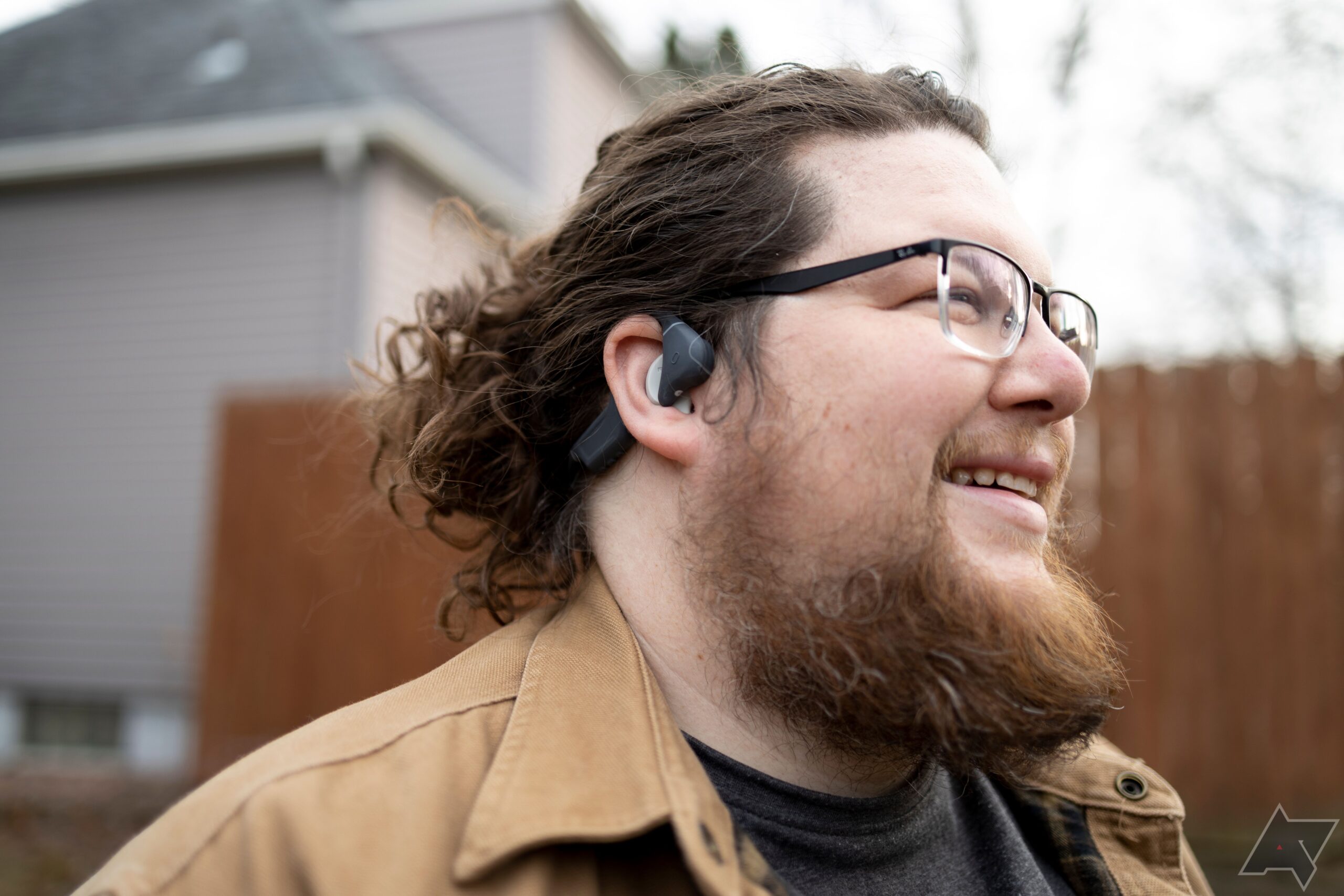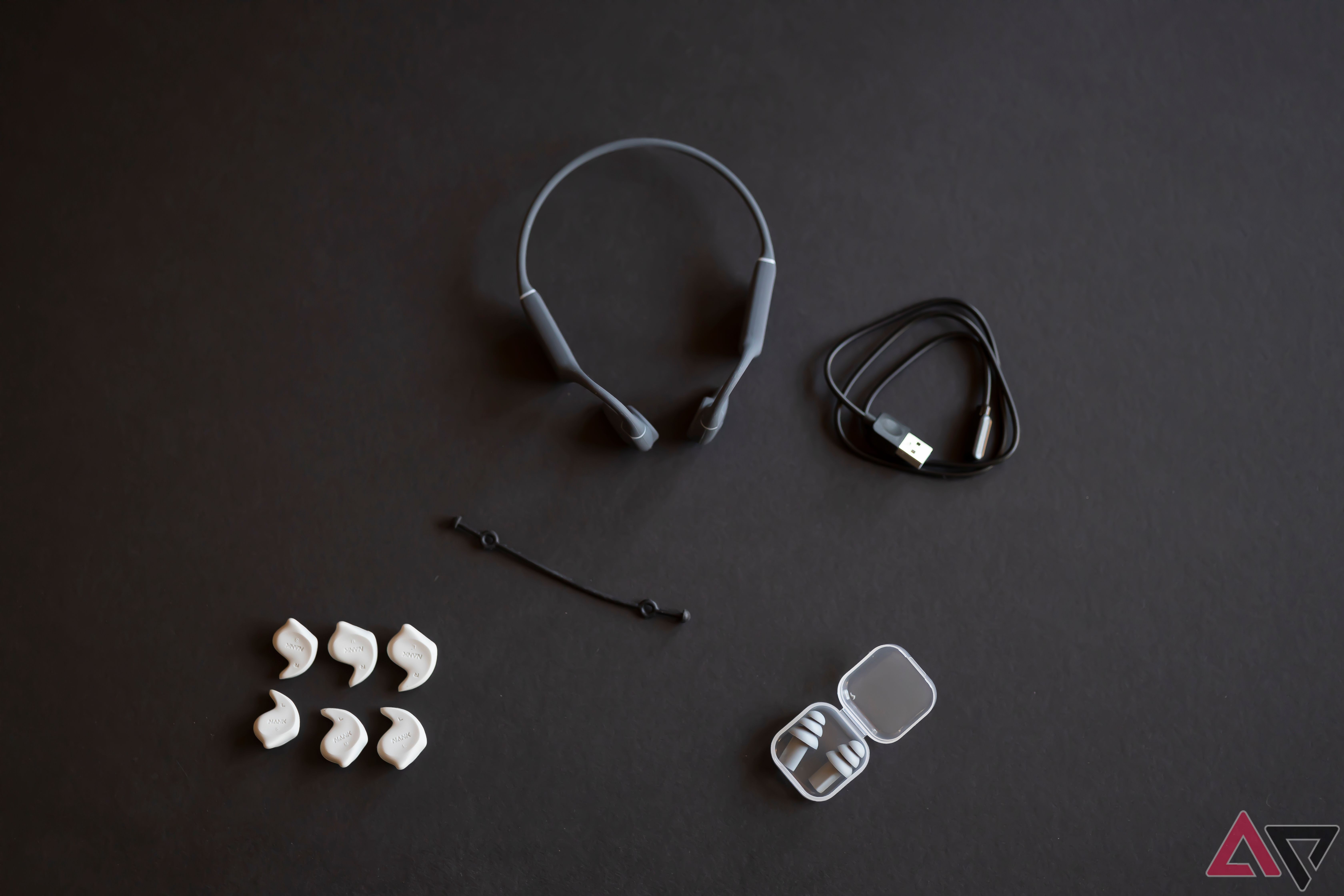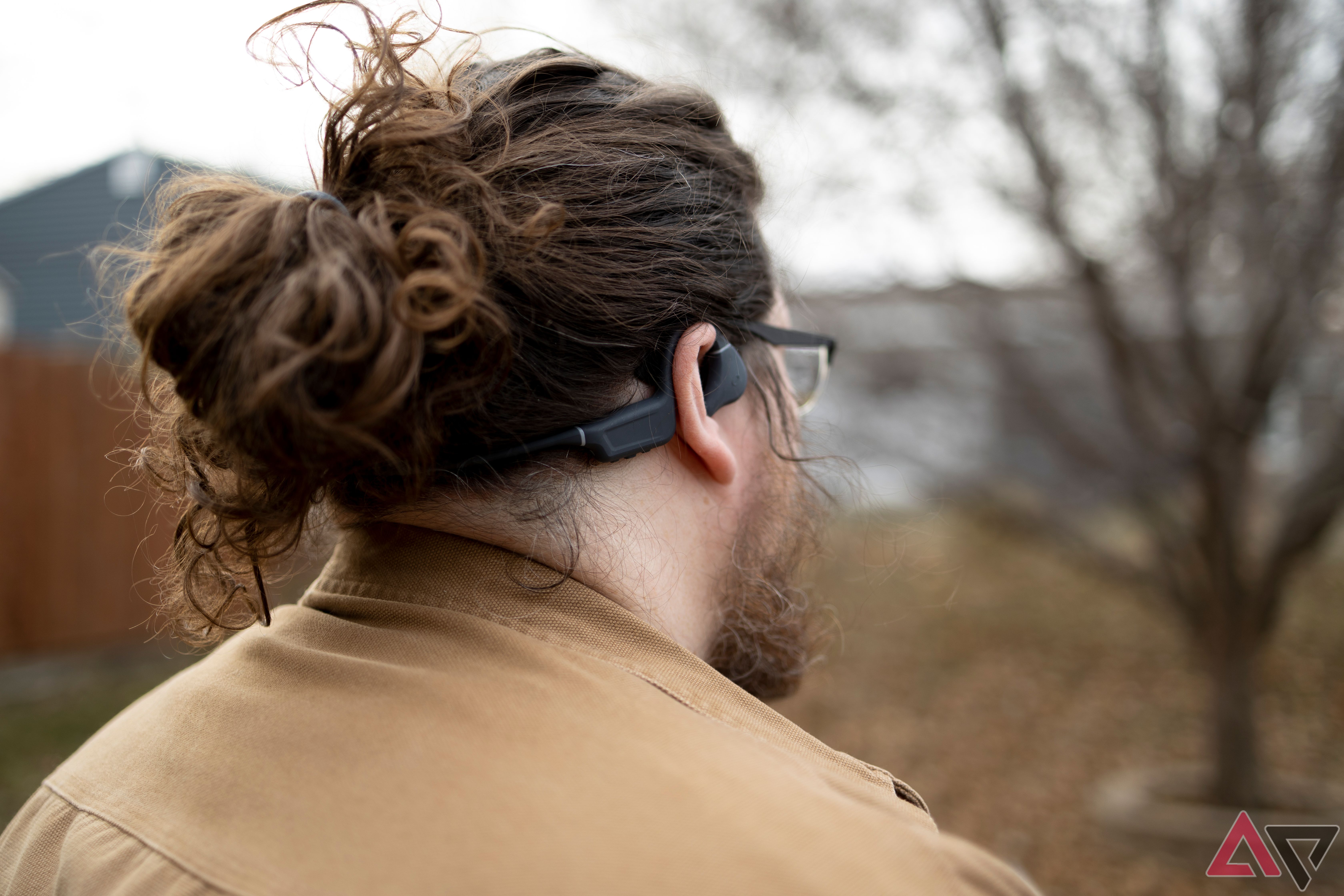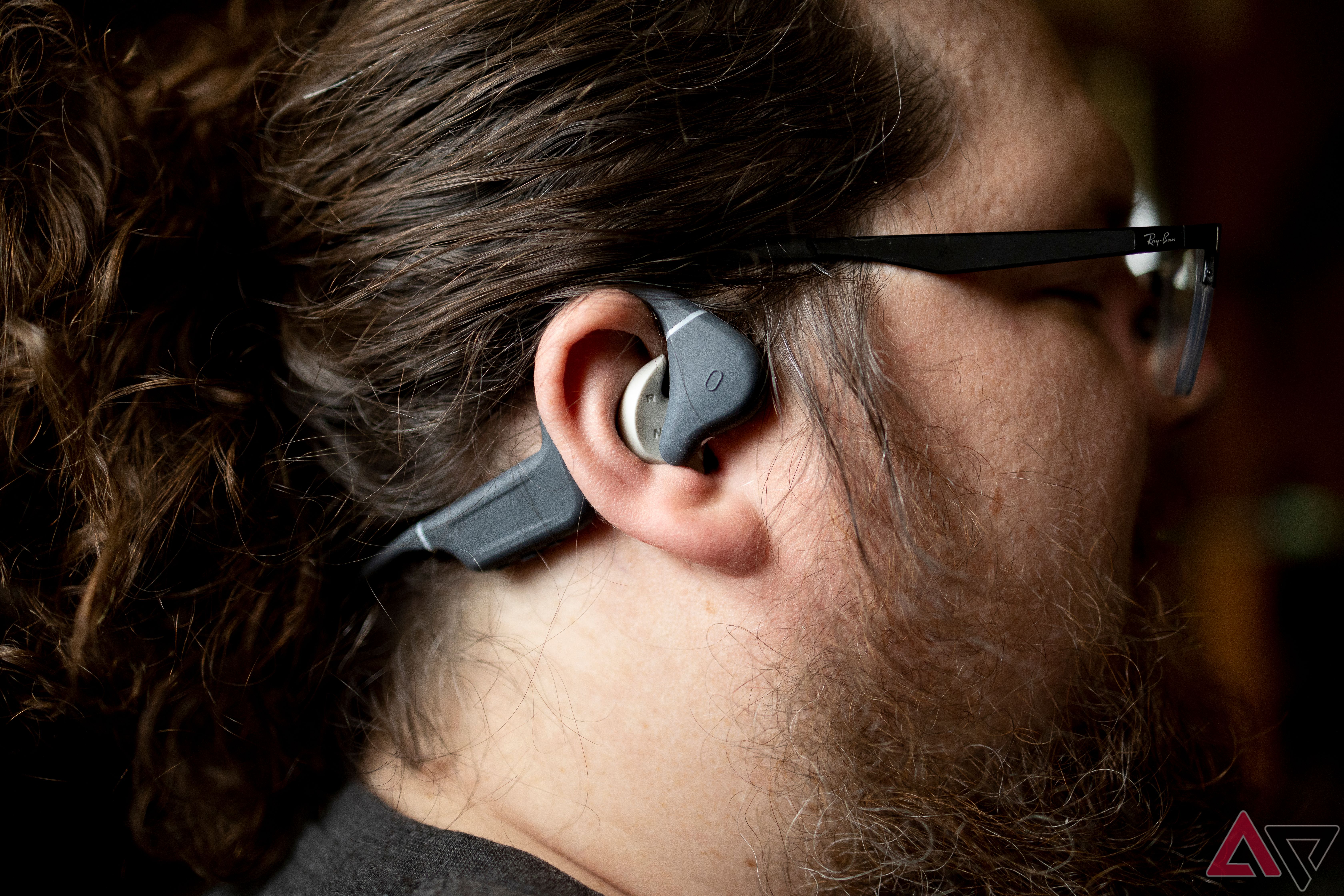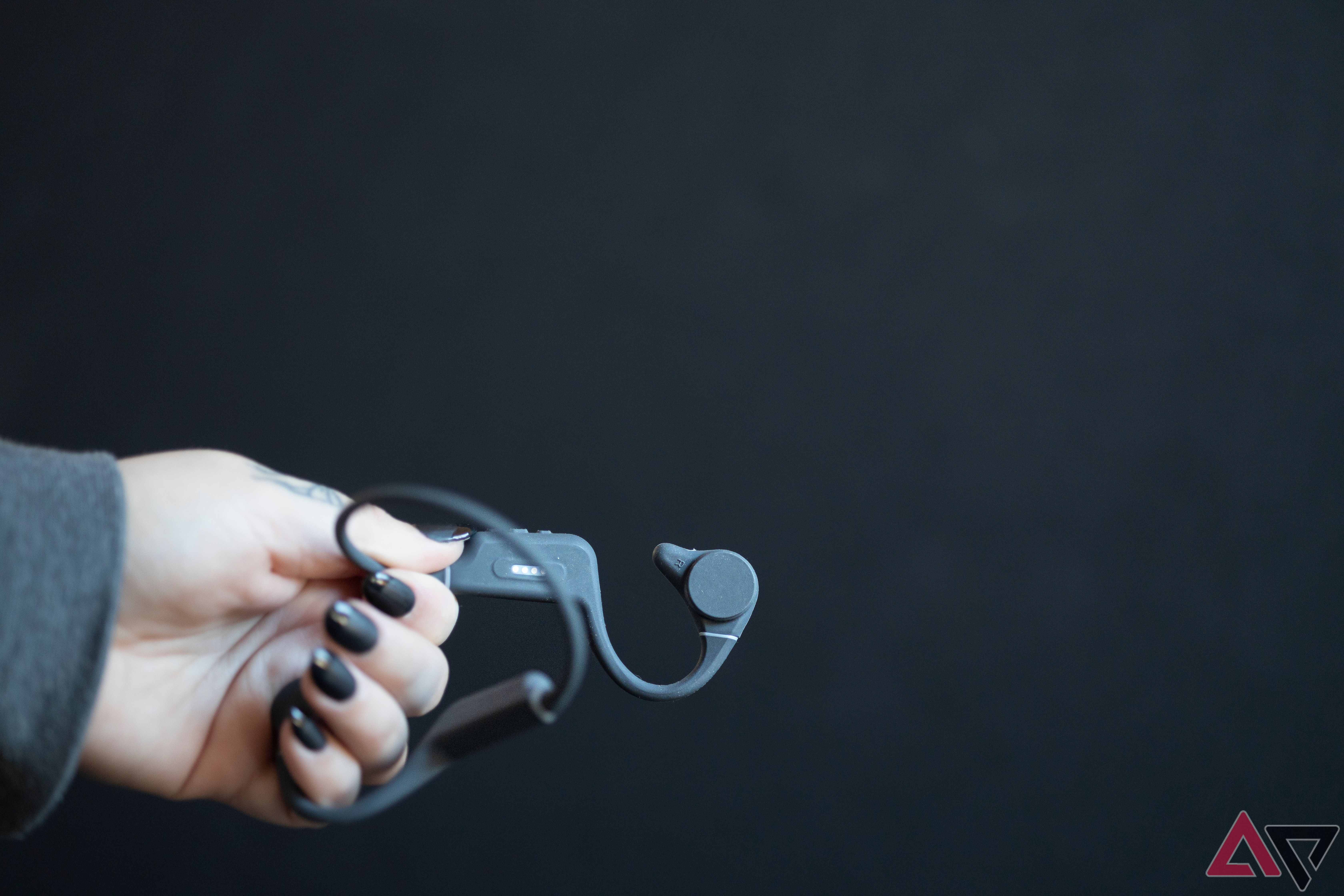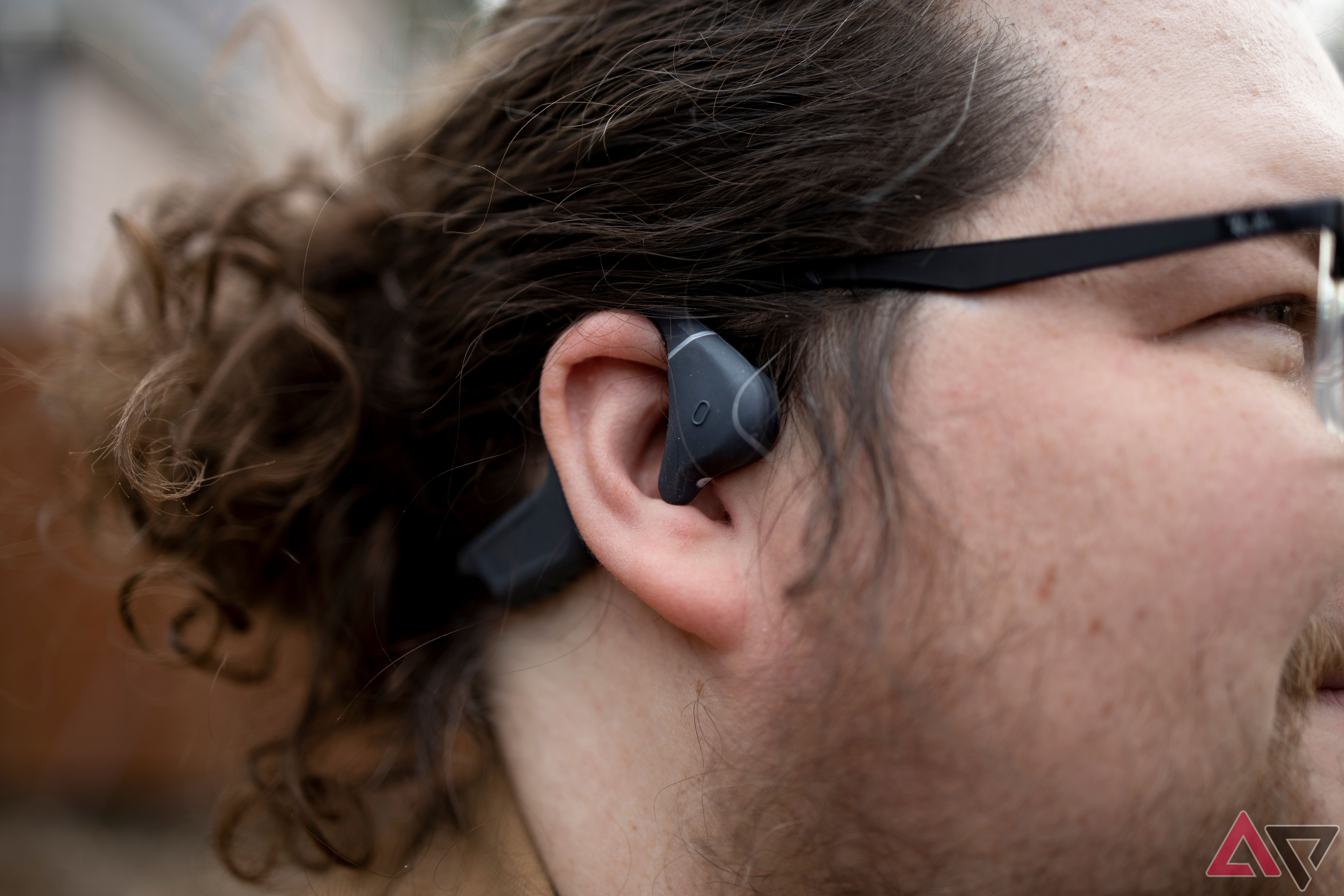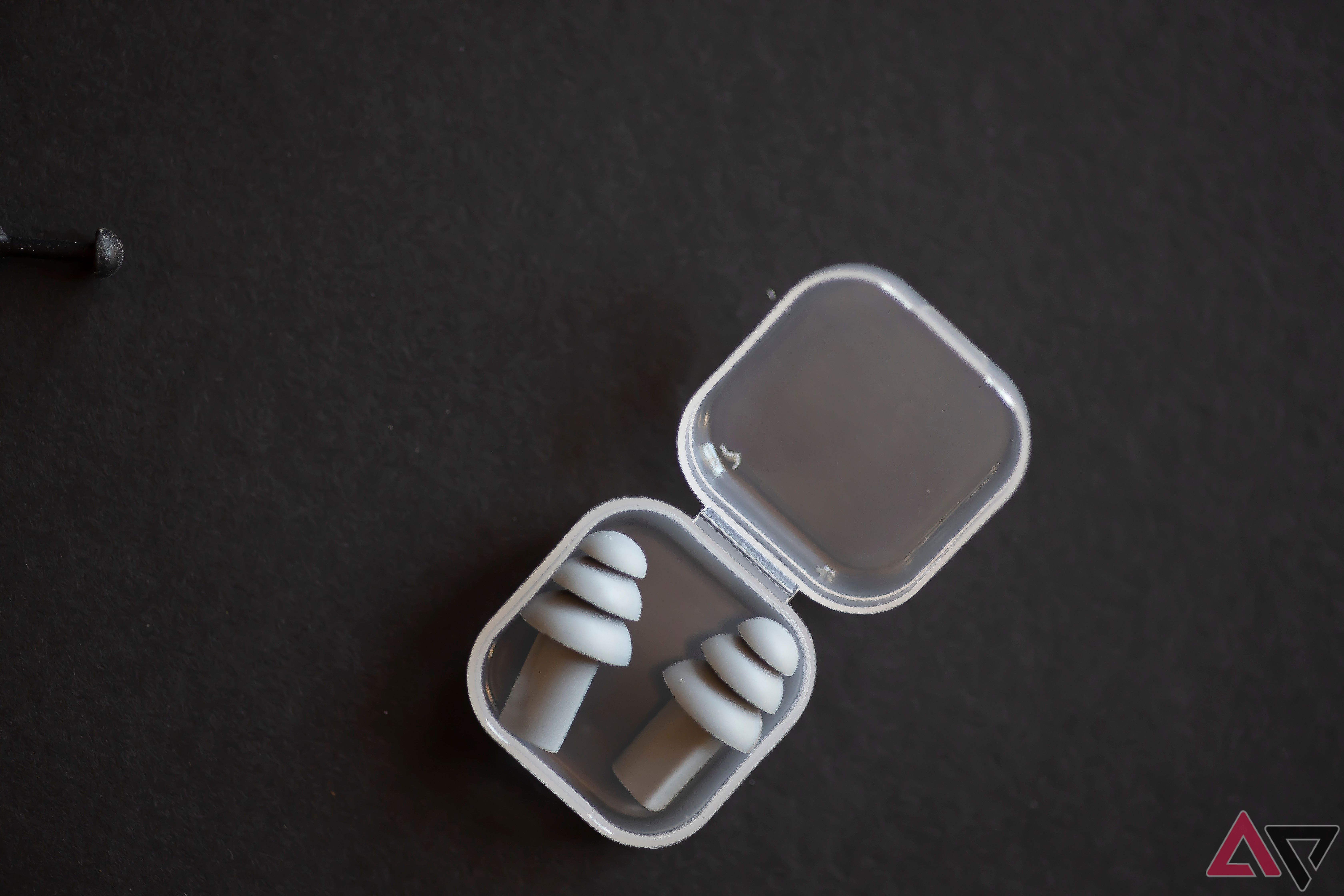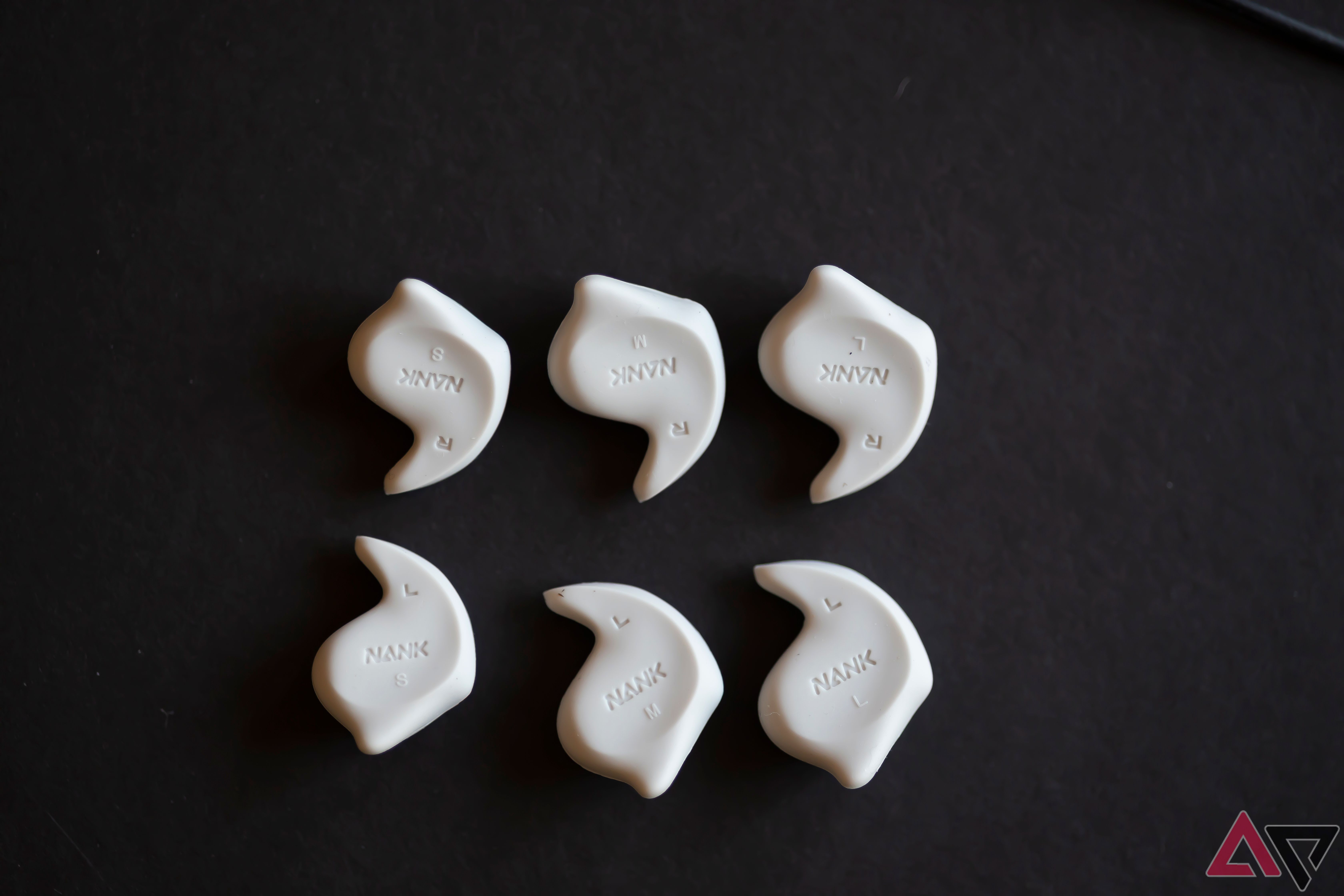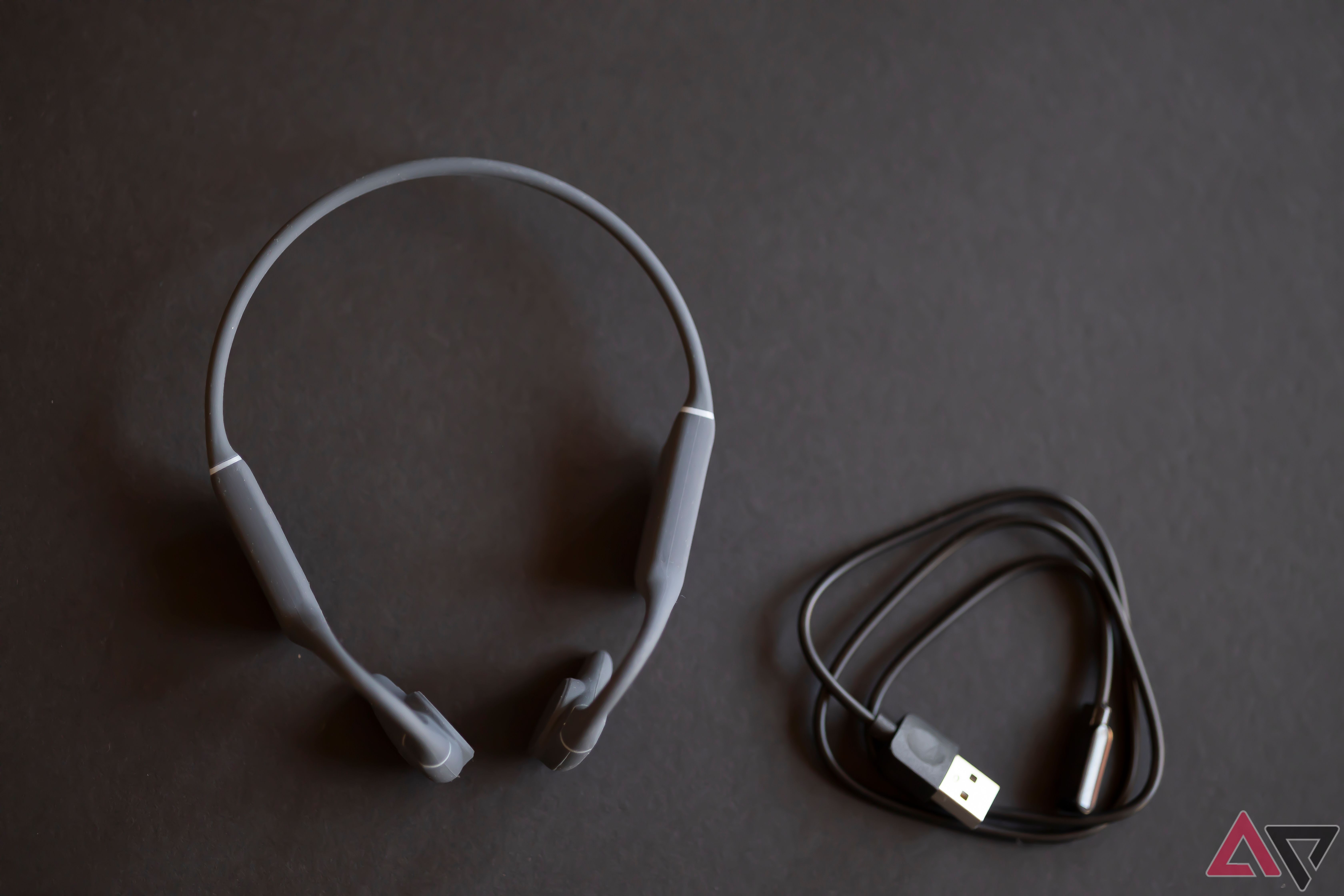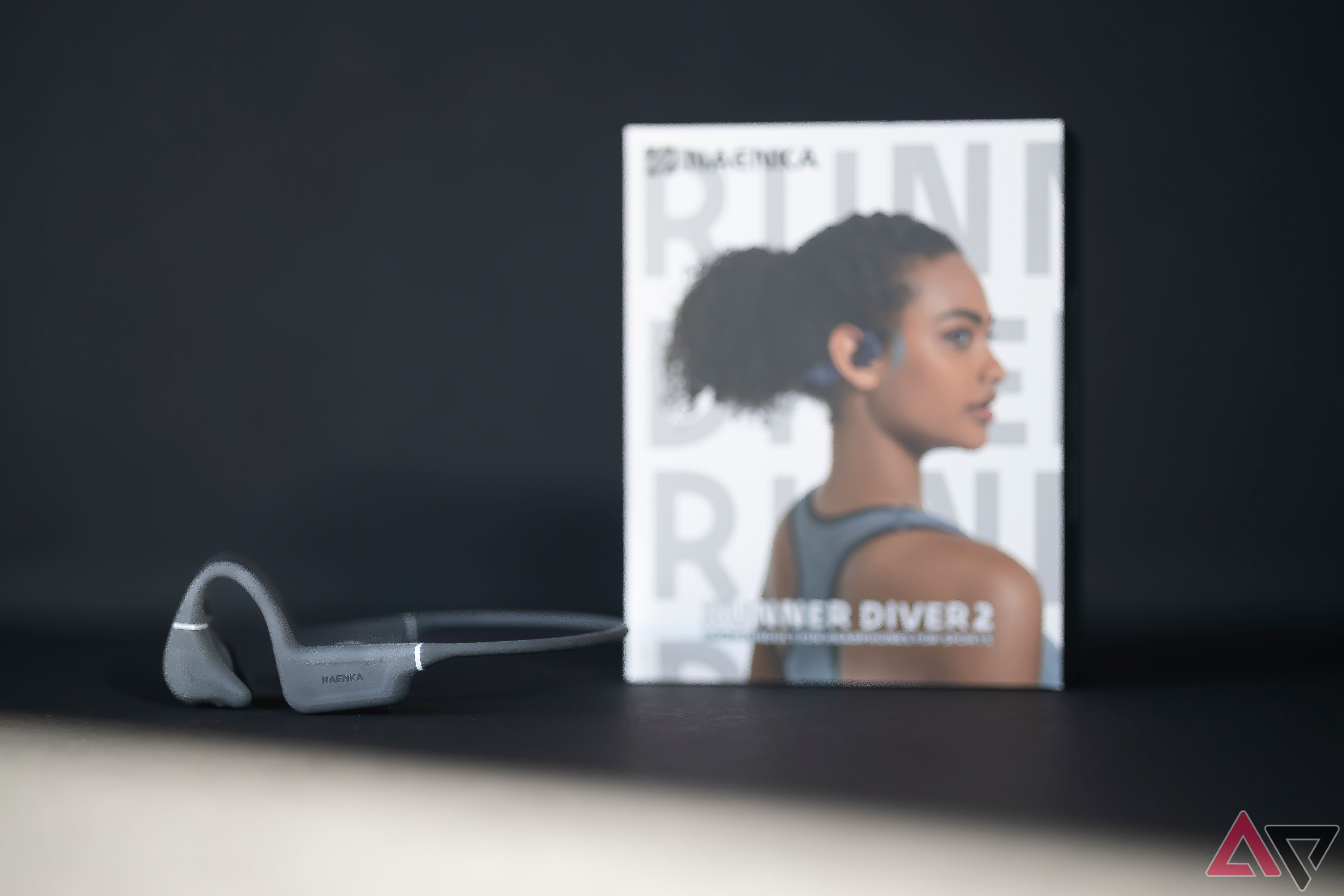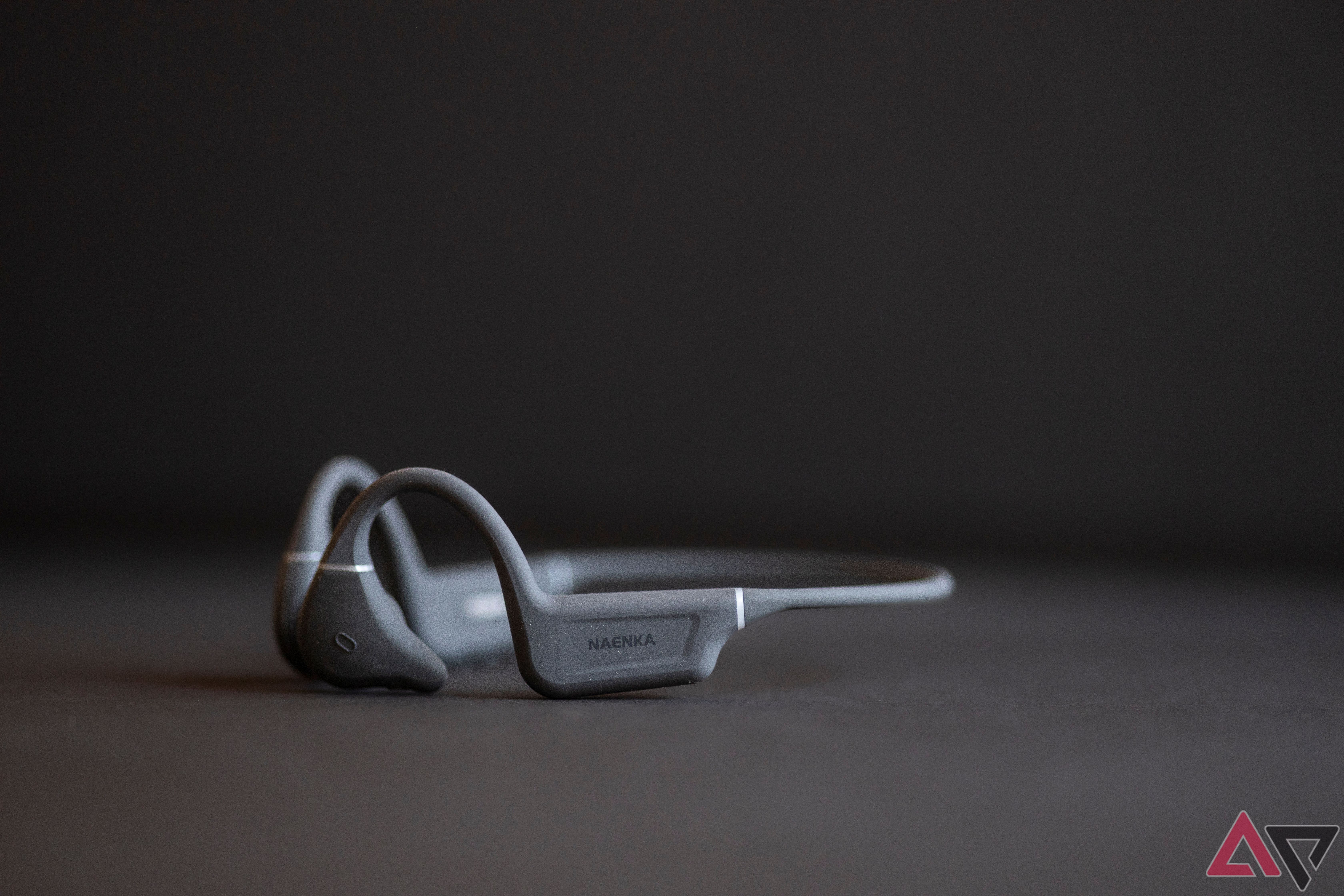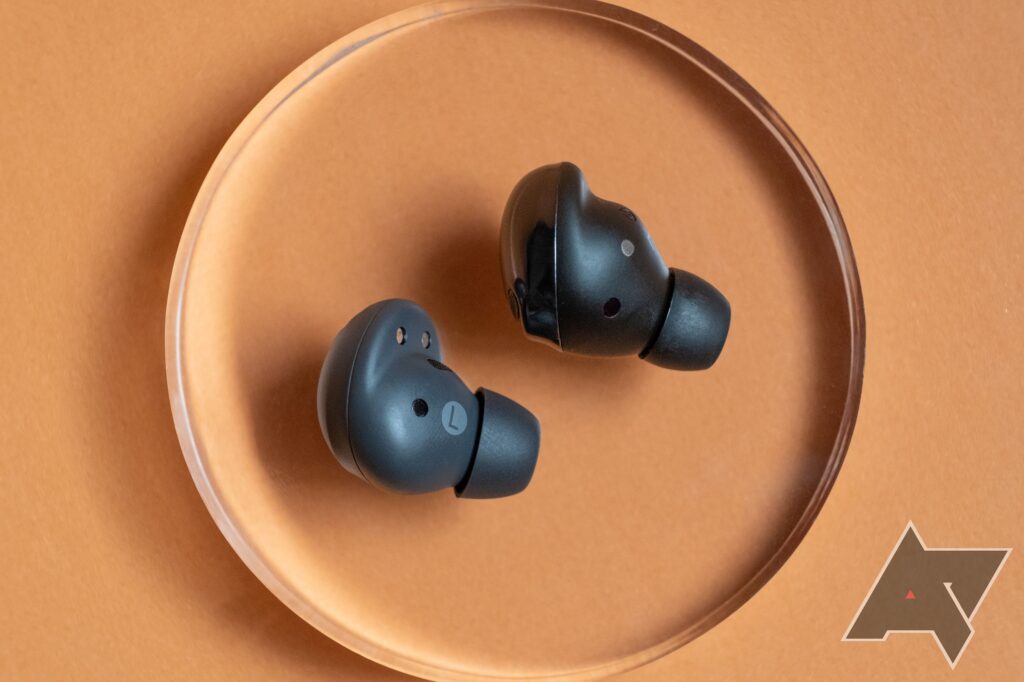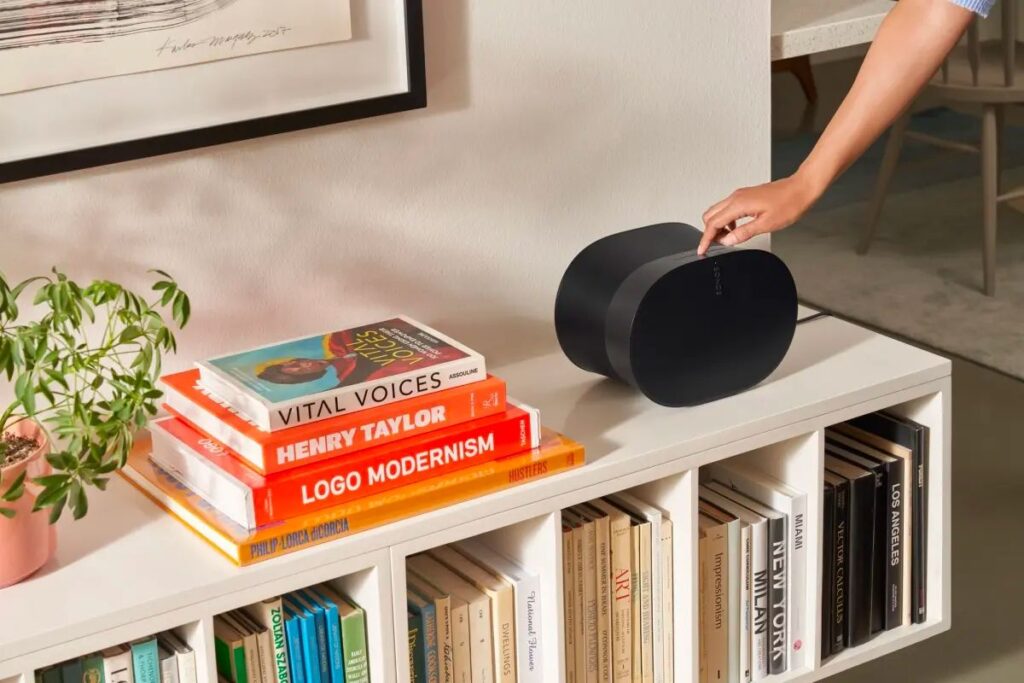We might still cringe at the thought of taking electronics in the water, but more and more gadgets these days are perfectly capable of withstanding a dip in the pool. There are underwater cameras and water-resistant phone cases; even the phones come with some waterproofing now. Another category that avid swimmers shouldn’t overlook is waterproof headphones and earbuds, which let you keep the tunes tuning even while practicing your backstroke.
Some headphones, like the Naenka Runner Diver 2, combine waterproofing with bone conduction. Bone conduction headphones channel sound waves through the cheekbones instead of the ear canals, a design chosen by users for several reasons, including comfort for athletes or access for people who are hearing impaired. The Naenka Runner Diver 2s are dustproof and waterproof, hardy enough for a triathlon that crosses land and water, and utilize bone conduction design for prolonged wearability.
You don’t have to be training for some magnificent display of athletic prowess to use the Runner Diver 2s, but these headphones are designed with specific users in mind.
Naenka Runner Diver 2
The Naenka Runner Diver 2 headphones use bone conduction technology for comfortable and accessible listening. They feature 32 GB of onboard memory to store music without a connected phone. A 10-hour battery ensures all-day listening, while the triple-layered silicone casing keeps errant pool waves sealed out. Use the included earplugs to boost underwater sound quality or the sound quality enhancers to lock out ambient noise while on a jog.
- Long battery life
- Impressive underwater sound quality
- Huge onboard MP3 memory
- No carrying case for smaller components
- Prone to dust and hair collection
Price, availability, and what’s included
A carrying case for all the small parts would be appreciated
The Naenka Runner Diver 2 swimming headphones retail for $150 online. They are only available directly from Naenka or Amazon. Note: This product may use the brand names Naenka and Nank interchangeably online.
The Naenka Runner Diver 2 waterproof headphones come with the user manual, a magnetic charging cable, earbuds to wear while swimming (pictured above in the plastic case on the bottom-right), a silicone strap for anchoring the earbuds to a swimsuit, sunglasses, or anything else, and three sets of what Naenka calls sound quality enhancers. Each pair is a different size to suit varying ear sizes.
There isn’t a charging block included with the headphones. For the price, I’d hoped to see a carrying bag at least included (nothing fancy) to tote the headphones around, especially since the sound quality enhancers double as tiny dust- and lint magnets. Naenka offers a nice zippered carrying case for less than $20, which I recommend purchasing along with the headphones.
Specifications
- Connectivity Technology
- Bluetooth 5.3
- Play Time
- 10 hours
- Power Source
- 180mAh battery
- Special Feature
- 32GB of onboard MP3 memory
- Speaker Technology
- Bone conduction
- IP rating
- IP68
- Weight:
- 32g
- Color:
- Black
Design and fit
The Runner Diver 2s are weightless, comfortable, and secure
The Naenka Runner Diver 2 headphones are made of triple-layered waterproof silicone. The material is prone to lint, hair, and dust collection, but with the headphones being waterproof, I didn’t sweat, just sticking them under the sink for a quick rinse.
They’re intended to be worn around the back of the head, situated on the upper nape of the neck. The earpieces rest on top of the ears, with the bone conduction transducers sitting on the highest part of the cheekbone, right in front of the ear. The over-ear, around-the-neck fit ensures that the headphones comfortably sit on anyone, regardless of head size or shape. However, I did notice that the transducers will fall closer or farther away from the ear itself, depending on the wearer.
Getting the headphones to feel “right” will take some fidgeting during the first wear, especially for users new to bone conduction headphones. (Where exactly on the neck should they sit? Over the hair or under the hair? Is this too close to the ears or too far away?) However, these incredibly lightweight headphones (only 32 grams or 1.13 ounces) will seem pretty near weightless when settled just right.
They’re remarkably comfortable and still unnoticeable even after hours of use. They also stayed pretty stable during the various activities employed for testing — including hiking, running, yoga, lifting, and swimming — with minimal adjustment needed.
The controls on these headphones are understandably minimalistic; you wouldn’t expect a complex suite of buttons on headphones meant for athletes who want to quickly change the song or turn up the volume while flying downhill on a bicycle or coming up for a gasp of air mid-swim. There are just three button controls, all on the right-side earpiece: volume up, volume down, and the function button, in between the other two and designated with an M.
The downside is that you must memorize a laundry list of functions and accompanying button sequences. For example, long-pressing for three seconds turns the headset on, long-pressing for five turns it off, and a single click is a different function, as are double, triple, and quadruple clicks… Not necessarily a design flaw, but a challenge to be aware of when choosing these types of headphones. As a plus, despite the triple-silicone-coated exterior, the buttons were consistently responsive and easy to press.
Features
Dust- and waterproofing, onboard MP3 tracks, and more
One of the Naenka Runner Diver 2’s most valuable utilities, especially to athletes, is the IP68 waterproof rating. IP68 expands on the IPX8 rating of the H20 Audio Tri Multi-Sports, another pair of sport-focused bone conduction headphones we reviewed, adding dust resistance to the list of protections. Naenka does advise against certain activities that may compromise the headphones’ waterproof effectiveness, such as sitting in a sauna or water skiing. Still, from what I could tell, the waterproof silicone was entirely effective while swimming and in the shower (you shouldn’t let soaps or other products come into contact with the headphones, though, says Naenka).
I was also impressed with the Runner Diver 2’s 32GB of onboard memory, which is compatible with MP3, M4A, WAV, APE, or FLAC files. This means you can store thousands — at least 6,000, up to around 10,000 — of songs for easy playing without needing a phone nearby. You might not have MP3 files anymore (my unused iTunes app just cried out from the void). Still, this feature is invaluable for headphone use in water, where Bluetooth connectivity is useless.
Moving audio files to the headphones was a breeze and very similar to the loading-up-an-iPod ways of old. Just use the included USB cable (it’s proprietary, by the way, so it’s best not to lose that) and connect the headphones to your computer, then drag the audio files to the drive.
While in MP3 mode, music tracks play either sequentially (in the order you put them in while adding them to the headphones, so be sure to keep your favorites at the top) or shuffled. A way to rearrange the order of the onboard songs via a mobile app would be a nice future consideration, so the headphones don’t have to be plugged back into a computer to rearrange tracks.
The Naenka Runner Diver 2s apparently come with some NFC support, and I wish the user manual was clearer in explaining what exactly the NFC feature of these headphones is. While the manual seems to imply using NFC as a means of faster Bluetooth connection, the text is just too confusing to be sure.
I think Naenka’s user pamphlet could use an overhaul to clarify some difficult-to-understand language and elaborate on some instructions, so be prepared to re-read some things more than once and employ some trial and error. However, just like with figuring out your best fit during the first wear, this is just some initial sluggishness that’ll clear up quickly once the startup stage passes.
Performance and audio quality
Making the most of bone conduction’s drawbacks
Bone conduction headphones are not an audiophile’s paradise. They can’t deliver that immersive, virtual-surround experience that traditional headphones deliver. However, keeping the proper expectations in mind, the Naenka Runner Diver 2s perform exceptionally well in their class. I mostly listen to metal, and parts of different songs I tested — intense drums, harsh guitar — literally made the headphones rattle at higher volumes, a strange sensation against the cheekbones that sort of tickled and was hard to ignore. I faced the same issue in bass- or guitar-heavy songs across any genre.
I think the Naenkas performed best at volumes not exceeding about 75%. You’re already fighting an uphill battle in retaining finer music details with the sound waves not being delivered directly through the ear canal. At higher volumes, a song’s more delicate details in the mid- to upper range will become too fuzzy on the Naenkas. But, regarding overall audio quality, the Runner Diver 2s are decently well-rounded in their sound delivery, with rich bass and solid midtones.
Diving beneath the surface? The Runner Diver 2s keep the party going beneath the waves, but not without some sound sacrifice. Music takes on a muffled quality, sort of like you’re underwater at a pool party with massive speakers bumping. The included tri-tip earplugs are nothing short of a necessity; they negate that muffled sensation and rescue some of the instrumental detail lost in the water.
These headphones also have a “swimming sound” mode, accessed only in MP3. It’s unclear how, exactly, this mode changes the headphones’ function, but the music did sound marginally clearer underwater with this mode enabled.
Naenka says these headphones use AI-powered noise reduction technology, a claim that I can’t exactly prove or disprove but definitely can’t ignore, given how well the headphones seemed to dampen environmental cacophony. Still, the open-eared design allows joggers and cyclists to hear important noises, like honking horns, sirens, or voices.
The sound quality enhancers are nice additions to modestly boost audio performance and improvise the sealed-off feel of noise-canceling headphones. Still, I’ll reiterate my annoyance that there’s no way to carry them around besides riskily tossing them into the depths of a backpack or a pocket. There’s also quite a bit of sound leakage, so don’t expect to listen to your guilty pleasure playlist without the yogi next to you knowing you’re a Spice Girls fan.
I took a few phone calls while testing the Runner Diver 2s, and they did the trick for answering a quick call while on a run or mid-stretch. The speaker on the other end remarked at times that I sounded muffled or far away; this makes sense, with the mic being right next to the ear instead of the mouth.
Battery life and charging
Pleasantly long battery life and fast charging
Naenka says the Runner Diver 2s should last through 10 hours of music playback (or 180 hours of standby or 15 hours of talk time). I used the headphones for about three hours daily, at about 60-80% volume, until the battery died completely. I didn’t even get a low battery warning until day three, and the battery didn’t go completely until day four. So the Runner Diver 2s gave me an unexpected extra two hours of battery life — and then fully recharged in barely 90 minutes.
Unfortunately, waterproof headphones like these can’t use your average everyday charger; in this case, they use something magnetic and are entirely impossible to reliably replace unless you order it directly from Naenka.
Competition
Naenkas are a strong contender in a small selection
Waterproof bone conduction headphones are a niche category to shop in, but there are still a few options. There’s the H2O Audio Tri Multi-Sport, some very similar bone conduction headphones that we liked for their lightweight fit and decent audio performance. However, the Naenkas sport a larger onboard memory for more MP3 songs, a greater IP waterproof rating, and easier-to-maneuver controls.
Shokz is a competing brand with options to suit a variety of athletes. OpenRun bone conduction headphones are more lightweight and more affordable, but sport a weaker waterproof rating and aren’t made for swimming. The Shokz OpenSwim are the same price as the Runner Diver 2s, and optimized for running, swimming, and cycling, but their onboard memory is smaller.
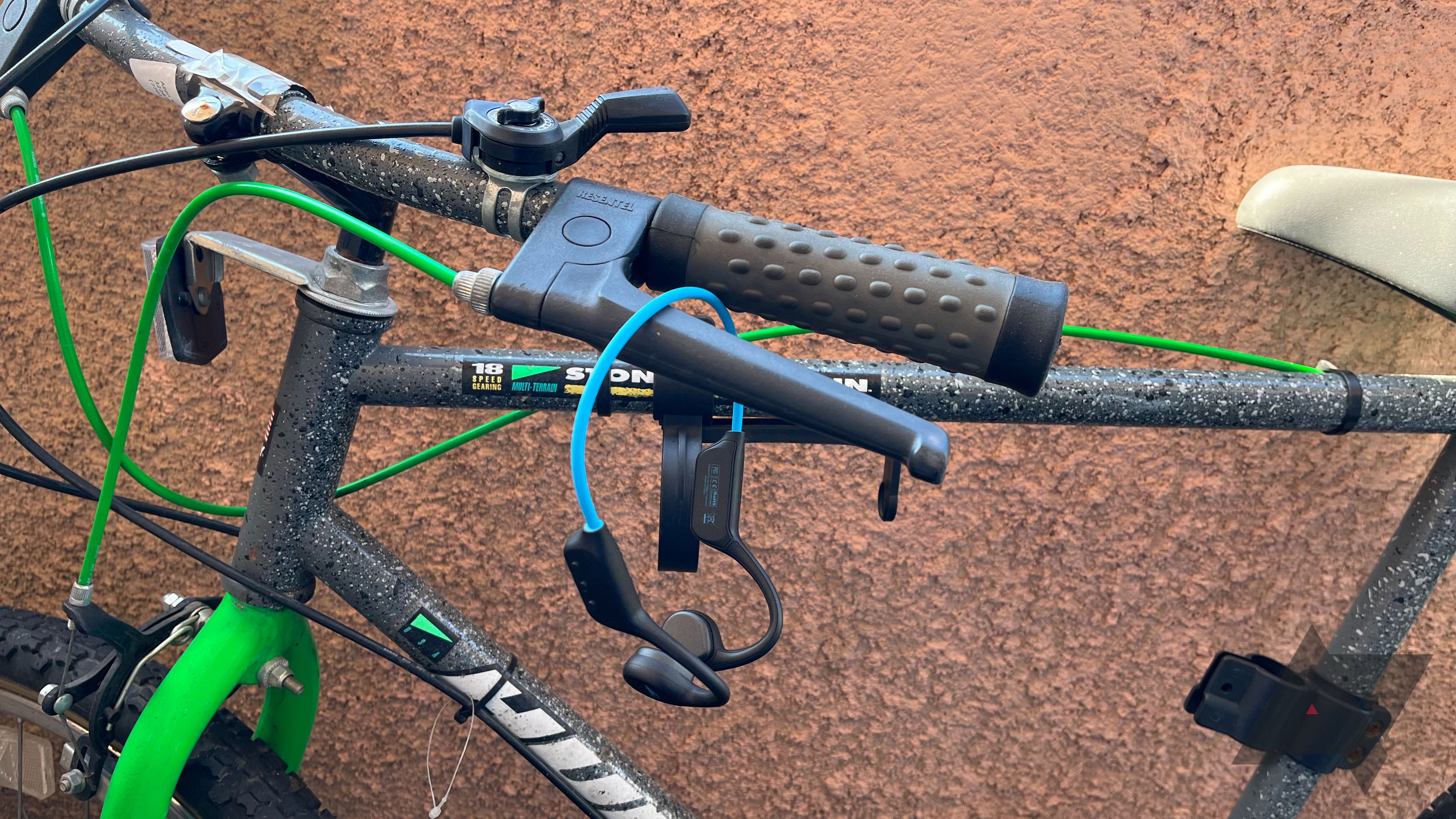
H2O Audio Tri Multi-Sport review: Bone conduction headphones for land and sea
A great option for extreme athletes
Should you buy the Naenka Runner Diver 2 headphones?
Hands-down worth it for athletes
No matter which brand, waterproof bone conduction headphones won’t have a lot of real-world utility outside of athletics, so this style of headphones might not suit you if you want something that you can keep from your morning run to your afternoon video conference to your evening gaming session. But if you’re a triathlete shopping for waterproof bone conduction headphones, I think the Runner Diver 2 headphones are your leading option.
They have double (and in some cases more) the onboard memory of their competitors, so more songs are easily accessible without a phone nearby. The IP68 rating protects against dust and sand, not just water, making the Runner Diver 2s more prepared for the elements. Plus, you get the included sound quality enhancers to take the audio up a notch or two.
An asking price of $150 seems entirely reasonable for these headphones — and they’re even on sale at the time of this review’s publishing. They’re built to last, withstand the elements, and exceed the expectations set forth by their class.
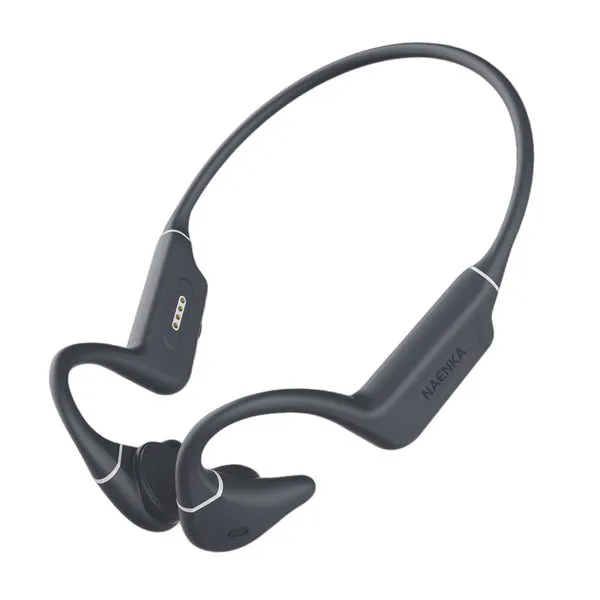
Naenka Runner Diver 2
The Naenka Runner Diver 2 headphones use bone conduction technology for comfortable and accessible listening. They feature 32 GB of onboard memory to store music without a connected phone. A 10-hour battery ensures all-day listening, while the triple-layered silicone casing keeps errant pool waves out. Use the included earplugs to boost underwater sound quality or sound quality enhancers to lock out ambient noise while on a jog.
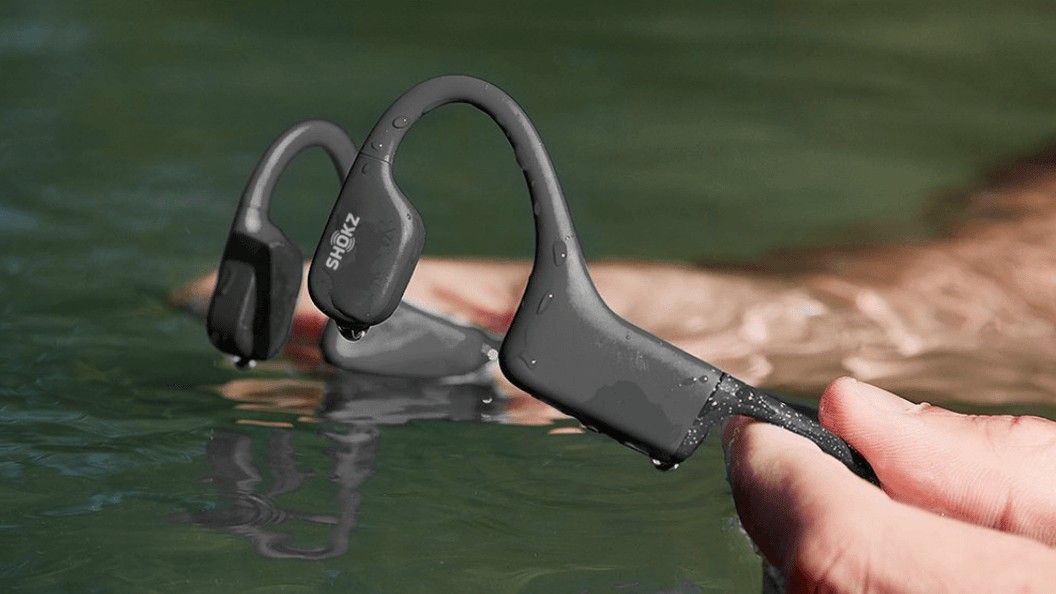
Best bone conduction headphones for swimming in 2024
Swimming is better with music
